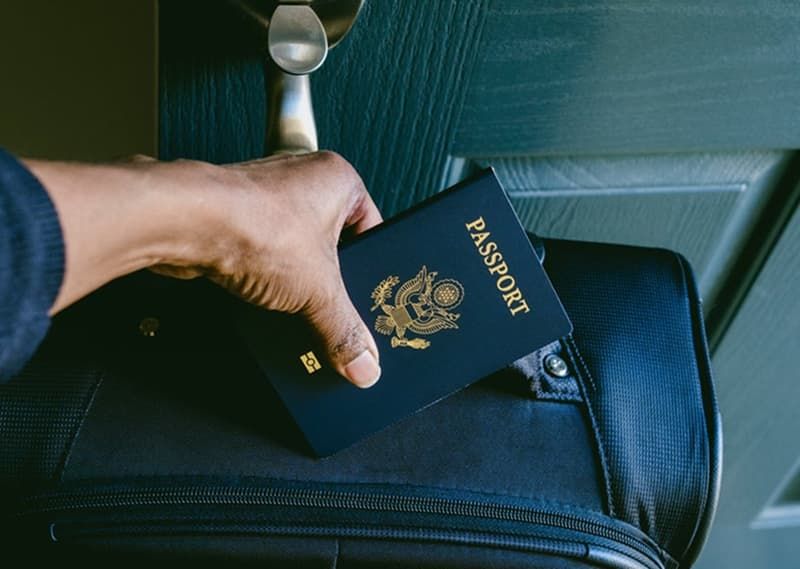Don’t Let Passport Mistakes Mar Your Overseas Trip
A passport may appear to be a simple going travelling document, but actually it’s your most important key to crossing borders. Airlines and border authorities treat its data with the highest seriousness, and even small errors or omissions can result in being denied boarding or denied entry on arrival. Numerous tourists learn this the hard way, only when their meticulously planned vacation is abruptly terminated. Being aware of the most frequent errors—and why they are important—saves you from heartbreak at the gate.

One of the biggest pitfalls is the “six-month rule.” Just because a passport has several months left on it does not mean that Thailand, Singapore, and the United Arab Emirates will accept it. They require it remain valid for at least six months beyond your stay. Someone traveling to a two-week holiday with a passport that will expire in three months may be refused check-in. Airlines check this quite rigidly since they are fined if they deliver passengers without proper documentation.
The passport condition is as crucial as its expiration date. The authorities reject passports whose covers are torn, pages lost, or water damaged. Even such minor abnormalities like the ink spot on the photo page or peeled off lamination can be interpreted as a suspicious sign of interference. Immigration employees must ensure that they know that the passport is not fake, and obvious wear can be doubtful resulting in time-consuming interrogation or complete rejection.
Stamp space is another overlooked issue. Some nations require at least two empty pages on which to affix entry and exit stamps. South Africa is especially strict in this regard. A traveler with half a page of space may be denied entry, even with a legitimate passport. Pages crowded with old stamps do not count; immigration agents want open space to stamp again. Frequent flyers typically experience this problem when their passports get filled up sooner than expected.
Children’s passports add a layer of complexity. Unlike those of adults, which tend to be valid for ten years from issuance, passports for children tend to be valid for only five years. Parents tend to forget about the shortened cycle, assuming their child’s passport is still valid. Coming to the airport with an expired child passport is a typical tale. Besides, the appearance of children can change fast, and so the staff at the border pays attention to whether the photo still looks like the traveler.
Name inconsistencies are another cause of concern. Not changing the passport in case of marriage, divorced, and changed your name legally, but never incorporated it into the passport can create a big trouble in the flight ticket and Visa matching. Even a lapse of middle initial may conduct to delays or refusal. Most countries require all documents to have the same name, so one must make sure it is uniform prior to travel.
Having the wrong visa—or no visa at all—is a trip-ruining mistake. Visa waivers are thought to be universal by some visitors, but they are not. American citizens, for example, are free to visit most of Europe for short stays but need a visa for Russia or China. Arriving without the proper visa compels the visitor to have no choice but to depart on the next available flight back.
Even passport photographs can trap you. A photo taken a decade earlier will no longer resemble you if your hair, weight, or beard has significantly altered. As border authorities nearly always employ visual verification, they will reject you if they are doubtful of the similarity. Renewal in advance when your photograph goes out of date avoids unnecessary inconvenience.
Your passport is not a book; it’s the single document that establishes your right to go anywhere in the world. Even seemingly innocuous transgressions such as not counting the six-month rule there, forgetting about damages, or not having enough blank pages can result in big consequences. The most secure way is to examine your passport soon before the departure: pay attention to its expiration date, condition, names matching with tickets, specifications of your destination. By doing these precautions, you are quite sure that your journey would start without that heavy pounding heart of failure at the entrance to the country.
 Disclaimer:
Disclaimer:
The content provided on our blog site traverses numerous categories, offering readers valuable and practical information. Readers can use the editorial team’s research and data to gain more insights into their topics of interest. However, they are requested not to treat the articles as conclusive. The website team cannot be held responsible for differences in data or inaccuracies found across other platforms. Please also note that the site might also miss out on various schemes and offers available that the readers may find more beneficial than the ones we cover.
Featured Articles
-
 Finance
FinanceWhat You Must Learn Before Investing in Gold
-
 Finance
FinanceHow CDs Can Save Your Financial Future in Potential Layoffs
-
 Travel
TravelWho Qualifies for Airline Discounts and How to Figure it Out
-
 Finance
FinanceBuy Now Pay Later or Credit Cards, Which is Better?
-
 Health & Wellness
Health & WellnessWhy Pumpkin Seeds Are the Perfect Fall Snack for Weight Loss and Better Sleep
-
 Travel
TravelTop Motivational Cycling Loop Tracks for Cyclists




